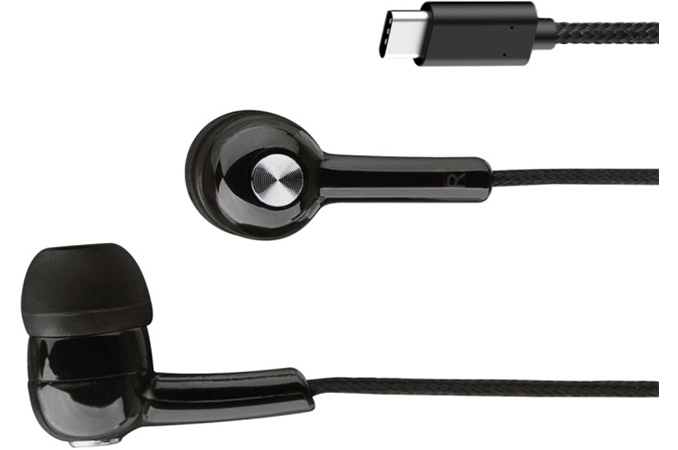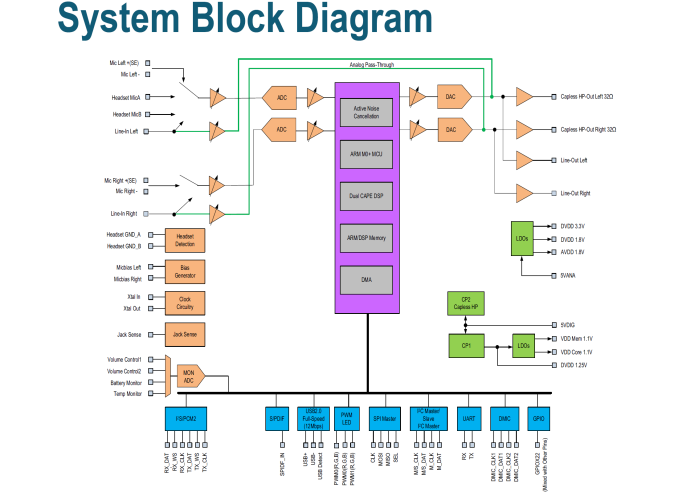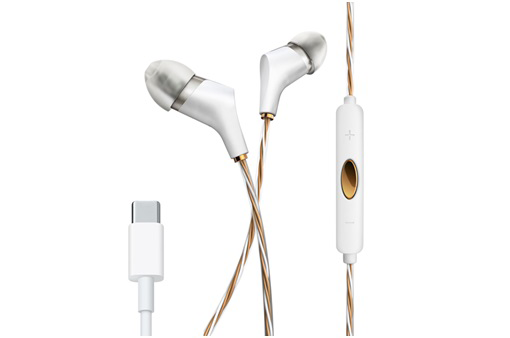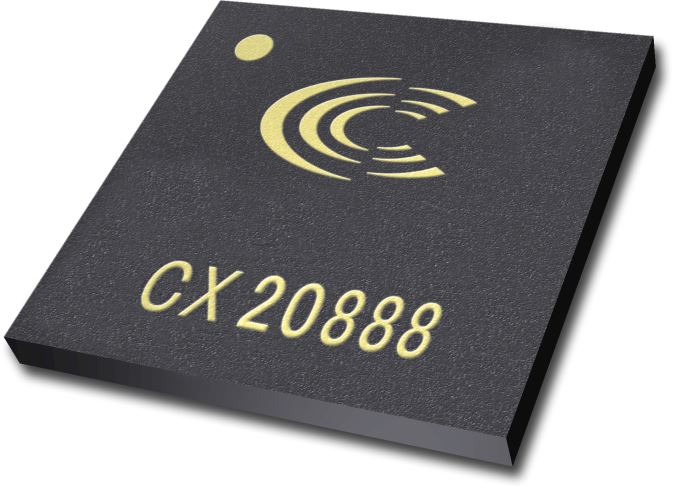Conexant Reveals CX20888: A New Chip for USB-C Headsets with Advanced Functionality
by Anton Shilov on June 29, 2016 1:40 PM EST- Posted in
- Mobile
- Intel
- Conexant
- USB-C
- USB-C Digital Audio

Conexant on Wednesday introduced its third CODEC for upcoming digital headsets using a USB Type-C interface. The new CX20888 chip is specifically tailored for headsets and supports a variety of advanced features, such as a headphone amplifier, active noise cancellation, sampling rates up to 96 kHz and so on. The company unveiled the product at the Mobile World Congress Shanghai in a bid to attract the attention of Chinese makers of consumer electronics.
The Conexant CX20888 is built around an ARM Cortex-M0 controller core (clocked at 50 MHz) and is equipped with two 32-bit Conexant DSPs (both clocked at 100 MHz) with floating point assist—bringing the total compute power of the DSPs to 400 MIPS—as well as 504 KB of SRAM that's shared between the M0 core and the DSPs. The CODEC also incorporates a variety of interfaces for peripherals, including two I2C master (or master + slave) interfaces, one I2S interface, one SPI, two multi-rate timers, a self wake-up timer, four monitor ADCs (to enable volume control, temperature sensor and battery monitor), two stereo PDM digital microphone interfaces, S/PDIF input and up to 28 GPIO pins.
Conexant utilizes the processing capabilities, as well as rich I/O features of the CX20888, to enable such functionality as low-latency active noise cancellation (eliminating up to 30 dB of external sound with a range of up to 3.8 kHz), acoustic echo canceling, equalization, microphone automatic gain control, volume control and others. The chip also supports a wake-on-voice trigger, which is important for enablement of services like Cortana that can listen to what is happening in its surroundings while the OS is in sleep mode.
To enable high-quality audio output, the CX20888 contains one 24-bit stereo ADC (97 dB dynamic range) and one 24-bit stereo DAC (104 dB dynamic range), supporting sampling rates between 8 kHz and 96 kHz. In addition, the chip incorporates a class-H headphone amplifier as well as programmable microphone preamplifiers with dedicated bias to prevent crosstalk. Because power circuitry is important for audio devices, the CX20888 has an integrated DC-DC converter with power switches and dynamic voltage scaling to ensure quality of output while keeping power consumption under control.
Like other USB-C Digital Audio solutions announced so far, the CX20888 supports USB 2.0 bandwidth, which should be plenty for audio and smart functionality. It also auto switches between CTIA and OMTP headsets if used inside a docking station.
Conexant tells us that the CX20888 is the industry’s only single-chip solution with such feature-set, which is suitable for digital USB-C headsets. The company naturally does not reveal the exact price of its solution, but claims that the chip reduces BOM costs of headsets because of its high level of integration. As for form factor, the CX20888 comes in 5×5×0.5 mm 81-pin BGA package and is small enough for a variety of designs.
Intel made a number of proposals for its part in the USB-C Digital Audio specification earlier this year and Conexant expects billions of people to adopt headsets and smartphones with a USB-C interface in the coming years (to support the transition of audio devices to USB-C, Conexant introduced two appropriate codecs earlier this year). The new interface is projected to improve the quality of headsets and expand their functionality by adding features, such as temperature sensors or noise cancellation technologies, but these depend entirely on decisions of actual hardware makers and not the standard itself. On paper USB-C Digital Audio enables a lot, but we will have to wait and see how it takes shape.
Source: Conexant



















55 Comments
View All Comments
Noremacam - Wednesday, June 29, 2016 - link
I wonder if using USB-C introduces any ms delays...ddriver - Wednesday, June 29, 2016 - link
It is usb so yes, it will probably add a millisecond of latency.So that's the "high end" quality the push to replace the audio jack with usb was all about. 97 dB dynamic range is quite laughable. But hey, at least it will add to the cost, so the goal is achieved, more milk from the cattle.
dr_traktor - Thursday, June 30, 2016 - link
It's an obvious typo in the article: that is the dynamic range for the 16 bit DAC, for which the theoretical maximum is 16 * 6 dB = 96 dB. So they even pulled out an extra dB out of nothing.extide - Thursday, June 30, 2016 - link
Well, it is actually a 24-bit DAC, so 97dB is not outrageous at all.BrokenCrayons - Wednesday, June 29, 2016 - link
Excellent! I'm glad to see that old analog audio jack get kicked to the curb in favor of something vastly more complex and costly that offers no tangible benefits. Bring on USB connectors for headphones and, why not mandate USB connectors on other things like my dresser? I could have a USB FOB that protected the secrets of my sock drawer!8steve8 - Wednesday, June 29, 2016 - link
no benefits? digital > analog. lets keep audio digital until the last possible moment, and this helps in that endeavor... benefits are audio quality via less noise/distortion.the largest benefit though are amps that can be custom designed for the headphones/speakers instead of general purpose amps.
There is a reason the entire studio monitor industry has gone from passive to self-amplified/powered.
ddriver - Wednesday, June 29, 2016 - link
You should get informed before posting such glorific displays of ignorance. The analog signal for headphones is already amplified and at that signal level even running through meters of unshileded cable is 100% OK. There is no added distortion or noise, nor any noticeable or even measurable loss of signal in range of the audible spectrum.99% of the high end professional studio reference monitors and headphones use analog signal connectors. Even self-powered monitors, which have a much lower line level inputs use analog connectors, they just use balanced cables - that is 3 wires per channel rather than 2.
If anything, the specs of this chip reveal fairly mediocre audio performance - a meager 97/104 dB I/O dynamic range. High end audio already pushes 120. And if you don't think that's much of a difference, familiarize yourself with the fact the scale of dB is not a linear but a logarithmic one. That means every 6 dB represent an increase of 100% or 2x. So a rather modest for pro audio 116 bB dynamic range already offers THREE TIMES the dynamic range of this so called "high quality digital" solution.
ddriver - Wednesday, June 29, 2016 - link
Also, the article doesn't mention THD of the converters and the amp, so I assume it is even more mediocre than the dynamic range.Digital audio is good as an option to have, but any attempts to replace the audio jack stem only from corporate greed and the desire to make more money on the clueless "omgz digital rulez" simpletons. I honestly feel pity for the poor souls, reduced to a state to fool them into buying all the empty hype. This is 100% in the interest of the industry, at the expense of the consumer. More costly products, more prone to breakage, more things to fail, very hard or even impossible to repair, plus making a lot of already good products obsolete, requiring either the purchase of new ones or bulky adapters.
8steve8 - Thursday, June 30, 2016 - link
Yes, most (not all) professional monitors use analog inputs, but they are self-amplified with custom-tuned and designed amplification solution paired with the speakers. This is a huge advantage. D/A occurring closer to the amp would only improve things... and it's certainly going in that direction.It's interesting me the personal attack I got just for saying obviously true things... that digital transmission is better than analog and should be used until the last possible moment for optimal audio quality.
I did not mention this specific chip/solution as I have not read the specs, but in general I fully support the move to usb-c headphone jacks to move the D/A and amps closer to the actual speakers.
When you say the amplified signal running through meters of unshielded cable is 100% ok... uhhh what does ok mean?
OK is certainly not lossless or perfect. usb-c audio represents a potential upgrade to the audio experience.
Would you also suggest video D/A occur on the video-card and then the signal sent through analog D-sub cables to the LCD?
Impulses - Thursday, June 30, 2016 - link
" usb-c audio represents a potential upgrade to the audio experience. "Huge generalisation with no facts to ground it's veracity. Shortening the signal path by a couple feet and moving from a shitty DAC/amp inside a phone to a shitty DAC/amp in an even more compromised device guarantees absolutely nothing.